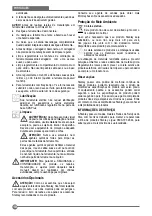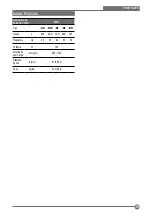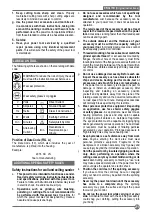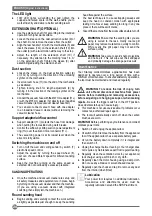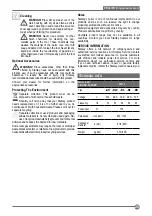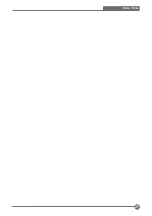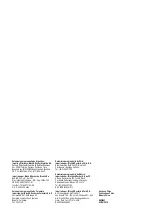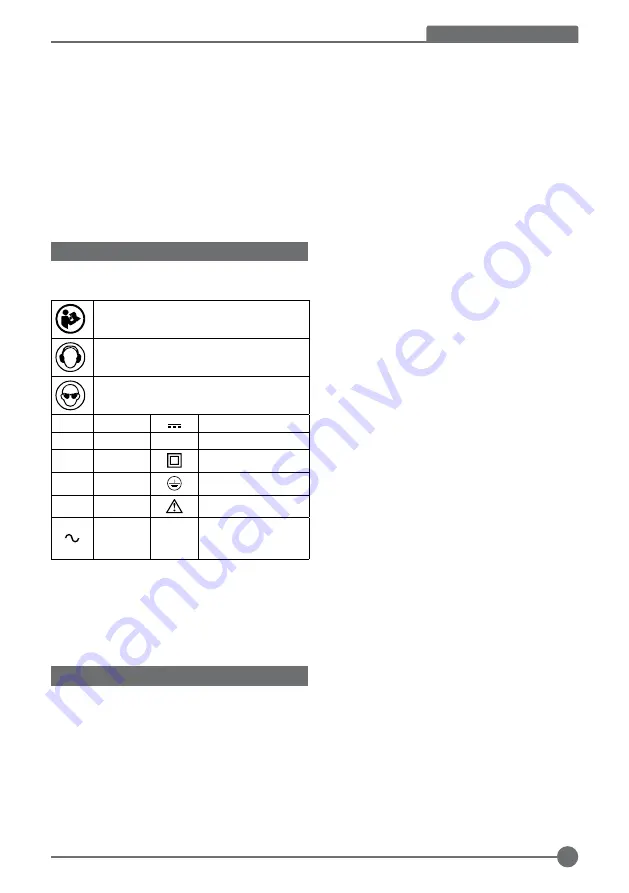
21
ENGLISH (
Original Instructions)
f. Keep cutting tools sharp and clean.
Properly
maintained cutting tools with sharp cutting edges are
less likely to bind and are easier to control.
g. Use the power tool, accessories and tool bits etc.
in accordance with these instructions, taking into
account the working conditions and the work to be
performed.
Use of the power tool for operations different
from those intended could result in a hazardous situation.
5. Service
a. Have your power tool serviced by a qualified
repair person using only identical replacement
parts.
This will ensure that the safety of the power tool
is maintained.
LABELS ON TOOL
The following symbols are shown on the tool along with date
code:
WARNING! To reduce the risk of injury, the user
must read the instruction manual before use.
Wear ear protection.
Wear safety glasses or goggles.
V
Volts
Direct Current
A
Amperes
n
0
No-Load Speed
Hz
Hertz
Class II Construction
W
Watts
Earthing Terminal
min
minutes
Safety Alert Symbol
Alternating
Current
/min.
Revolutions or
Reciprocation per
minute
Position of Date Code (FIG. A)
The Date Code (10), which also includes the year of
manufacture, is printed into the housing.
Example:
2018 XX JN
Year of manufacturing
ADDITIONAL SPECIAL SAFETY RULES
Safety instructions for wall and ceiling sander
a.
This power tool is intended to function as a sander.
Read all safety warnings, instructions,illustrations
and specifications provided with this power tool.
Failure to follow all instructions listed below may result
in electric shock, fire and/or serious injury.
b.
Operations such as grinding, wire brushing,
polishing or cutting-off are not recommended to
be performed with this power tool.
Operations for
which the power tool was not designed may create a
hazard and cause personal injury.
c.
Do not use accessories which are not specifically
designed and recommended by the tool
manufacturer.
Just because the accessory can be
attached to your power tool, it does not assure safe
operation.
d.
The rated speed of the accessory must be at least
equal to the maximum speed marked on the power
tool.
Accessories running faster than their rated speed
can break and fly apart..
e.
The outside diameter and the thickness of your
accessory must be within the capacity rating of
your power tool.
Incorrectly sized accessories cannot
be adequately guarded or controlled.
f.
Threaded mounting of accessories must match the
grinder spindle thread.
For accessories mounted by
flanges, the arbour hole of the accessory must fit the
locating diameter of the flange. Accessories that do not
match the mounting hardware of the power tool will run
out of balance, vibrate excessively and may cause loss
of control.
g.
Do not use a damaged accessory. Before each use
inspect the accessory such as abrasive wheelsfor
chips and cracks, backing pad for cracks, tear or
excess wear, wire brush for loose or cracked wires.
If the power tool or accessory is dropped, inspect for
damage or install an undamaged accessory. After
inspecting and installing an accessory, position
yourself and bystanders away from the plane of the
rotating accessory and run the power tool at maximum
no load speed for one minute. Damaged accessories
will normally break apart during this test time.
h.
Wear personal protective equipment .Depending
on application, use face shield, safety goggles
or safety glasses.
As appropriate, wear dust mask,
hearing protectors, gloves and shop apron capable
of stopping small abrasive or workpiece fragments.
The eye protection must be capable of stopping flying
debris generated by various operations. The dust mask
or respirator must be capable of filtrating particles
generated by your operation. Prolonged exposure to
high intensity noise may cause hearing loss.
i.
Keep bystanders a safe distance away from work
area.
Anyone entering the work area must wear
personal protective equipment. Fragments of the
workpiece or of a broken accessory may fly away and
cause injury beyond the immediate area of operation.
j.
Hold the power tool by insulated gripping surfaces
only, when performing an operation where the
cutting accessory may contact hidden wiring or its
own cord.
Cutting accessory contacting a “live” wire
may make exposed metal parts of the power tool “live”
and could give the operator an electric shock.
k.
Position the cord clear of the spinning accessory.
If you lose control, the cord may be cut or snagged
and your hand or arm may be pulled into the spinning
accessory.
l.
Never lay the power tool down until the accessory
has come to a complete stop.
The spinning
accessory may grab the surface and pull the power
tool out of your control.
m.
Do not run the power tool while carrying it at your
side.
Accidental contact with the spinning accessory
could snag your clothing, pulling the accessory into
your body.












